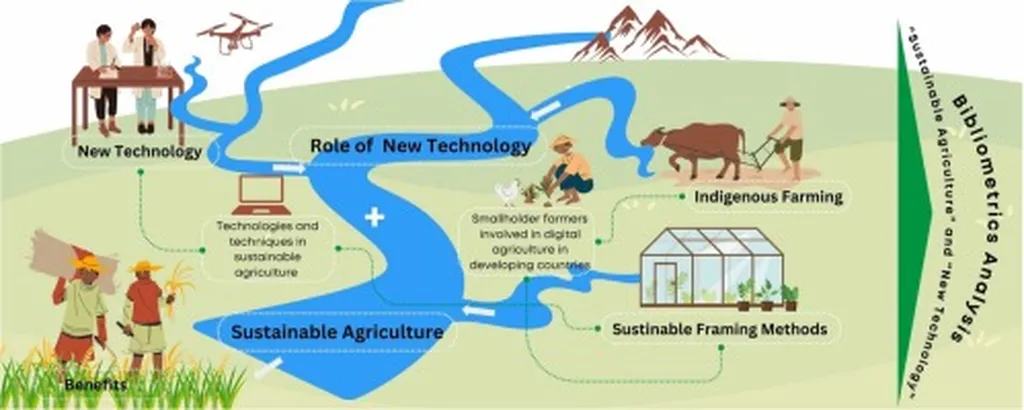In the ever-evolving landscape of agriculture, innovation is the key to sustainability and productivity. A recent meta-analysis published in the *International Journal of Bio-Resource and Stress Management* sheds light on how agricultural innovations are being evaluated and what drives these evaluations. Led by Haridra Sharma from the Department of Extension Education at Assam Agricultural University, the study offers a comprehensive look at the trends and methodologies shaping the future of agricultural technology.
The research, which analyzed 25 systematically selected articles, reveals that the primary purpose behind agricultural innovations is environmental protection, accounting for 60% of the studies reviewed. This is followed by improvements in farm performance, which was the focus in 28% of the cases. “The findings indicate a strong shift towards sustainability,” Sharma notes. “Agricultural innovations are increasingly being designed with the environment in mind, which is a positive sign for the future of farming.”
The study also highlights the types of innovations that researchers are focusing on. Environment-preserving technologies lead the pack at 36%, while precision technologies, which include GPS-guided tractors and drones for crop monitoring, account for 20% of the innovations studied. These technologies are not only about enhancing productivity but also about reducing environmental impact, a critical factor for the agriculture sector.
Evaluation indicators such as the ability to reduce environmental impact and strengthen farmer participation were studied in most cases, each accounting for 32% of the evaluations. This dual focus suggests that the agriculture sector is recognizing the importance of both ecological sustainability and social inclusivity. “Innovations that can engage farmers more effectively are likely to have a greater impact,” Sharma explains. “This is because farmers are the end-users, and their participation is crucial for the success of any new technology.”
The study also examined innovation strategies, finding that both proactive and reactive approaches are almost equally employed, at 44% and 48% respectively. Proactive strategies involve anticipating future needs and developing technologies accordingly, while reactive strategies respond to immediate problems. The analysis revealed that studies focusing on environment protection as the prime purpose often involved proactive strategies, indicating a forward-thinking approach in the field.
The commercial implications of these findings are significant. For the agriculture sector, understanding the trends in agricultural innovation can help stakeholders make informed decisions about where to invest their resources. The emphasis on environment-preserving technologies and precision technologies suggests that there is a growing market for sustainable and efficient farming solutions. This could drive investment in research and development, leading to more innovative products and services that benefit both farmers and the environment.
Moreover, the focus on strengthening farmer participation highlights the importance of inclusive development. Technologies that are designed with the input of farmers are more likely to be adopted and used effectively. This could lead to a more collaborative approach between researchers, developers, and farmers, fostering a culture of innovation and continuous improvement.
As the agriculture sector continues to evolve, the insights from this meta-analysis can guide future developments. The shift towards sustainability and the emphasis on farmer participation are trends that are likely to shape the future of agricultural innovation. By understanding these trends, stakeholders can better navigate the complexities of the agriculture sector and contribute to its growth and sustainability.
In the words of Haridra Sharma, “The future of agriculture lies in our ability to innovate responsibly and inclusively. This meta-analysis provides a roadmap for achieving that goal.” As the sector moves forward, the findings from this study will undoubtedly play a crucial role in shaping the innovations that will define the future of farming.

